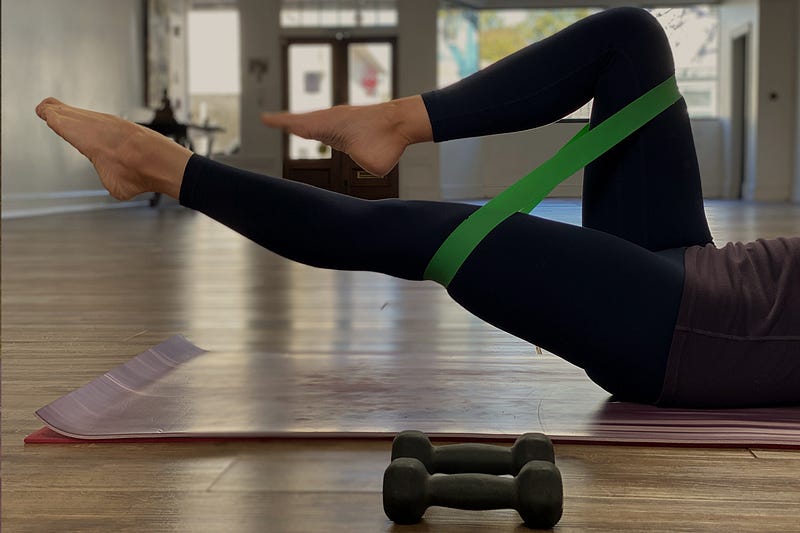Effective Strategies for Healing Groin Injuries: A Comprehensive Guide
Written on
Understanding Groin Injuries
Have you ever experienced a strain in your groin or inner thigh? If so, you're likely familiar with the discomfort and disruption it can bring. Groin injuries are particularly common in sports and activities that require rapid lateral movements, abrupt changes in direction, or kicking. Unfortunately, many individuals neglect to strengthen this area, leading to extended recovery times after an injury.
To better prepare yourself for running and to minimize the risk of future injuries, it's essential to focus on strengthening the inner thigh muscles, known as adductors. In this guide, we will explore three straightforward exercises designed to target this muscle group. These exercises are not only easy to perform but also require minimal equipment. Dedicating just one session per week to these movements can significantly enhance your overall health and performance.
You only need 5 minutes a week to reduce the risk of groin injuries!
3 Exercises for Healing and Preventing Groin Injuries
This guide specifically addresses minor groin strains and injuries. If you're experiencing severe pain, it's crucial to seek professional medical advice. The goal is to initiate gentle movements once the pain is manageable. If your injury is recent, resting and engaging in light walking for the first few days is advisable. As you recover, gradually reintroducing load to the affected tissues will aid in strengthening and preventing further complications.
Keep in mind that the suggested repetitions below are just guidelines. You might need to start with fewer reps to ease into the routine. Ultimately, listen to your body's signals. This approach is about long-term improvement, so be patient and trust that you'll progress over time.
Let's delve into the three exercises that will help you strengthen your groin muscles!
- Isometric Adduction Pulses

Execution: 10 holds of 5 seconds
Instructions: Lie on your back with your knees bent (this can also be done while seated). Squeeze a ball between your knees to engage your adductors. Maintain the squeeze for about 5 seconds, then relax. Take a brief 1-2 second pause before repeating for the next set. Remember to breathe out while applying pressure and inhale during the rest.
- Side-lying Leg Raises

Execution: 10–15 reps per side
Instructions: Position yourself on your side, ensuring the bottom leg is slightly forward. Once settled, perform a straight-leg raise with your bottom leg, aiming to lift it 1-2 feet off the ground. Focus on a pain-free range of motion. Complete 10-15 consecutive reps before switching sides.
- Slider Lunges

Execution: 8–10 reps per side
Instructions: Start in a standing position with a slider or towel beneath your moving leg. Gradually hinge back at the hips while sliding your leg outward. Once you reach a challenging but comfortable position, draw your leg back in, applying light pressure on the floor. This is a more advanced movement, so begin with a smaller range and increase as you become more comfortable.
Additional Exercises:
- Leg Lift with Adduction
- Copenhagen Adduction Lifts
- Seated Adduction on Machine
Important Note:
In some situations, exercise therapy alone may not suffice. If you repeatedly find yourself in situations that lead to injuries due to poor choices in activity, you may continue to face setbacks. As you embark on your rehabilitation journey, pay careful attention to the movements that initially caused your injury. Often, there are modifications we can implement in our recreational activities or work environments to facilitate the recovery process. This step is critical and should not be overlooked!

Conclusion
Groin injuries can be both frustrating and inconvenient, but with the right knowledge, they can be effectively prevented. A little maintenance of your adductor muscles can lead to stronger inner thighs tailored to your training needs. Start incorporating the three exercises mentioned above 1-2 times a week, and you will likely see a substantial improvement in your lower body strength and overall performance.
Whether you're a dedicated athlete or an occasional runner, this approach is your key to avoiding groin injuries!
This video provides insights on how to rehabilitate a pulled groin effectively, guiding you through essential steps to recovery.
Explore four exercises designed to alleviate nagging groin pain and strains, ensuring a thorough healing process for the future.